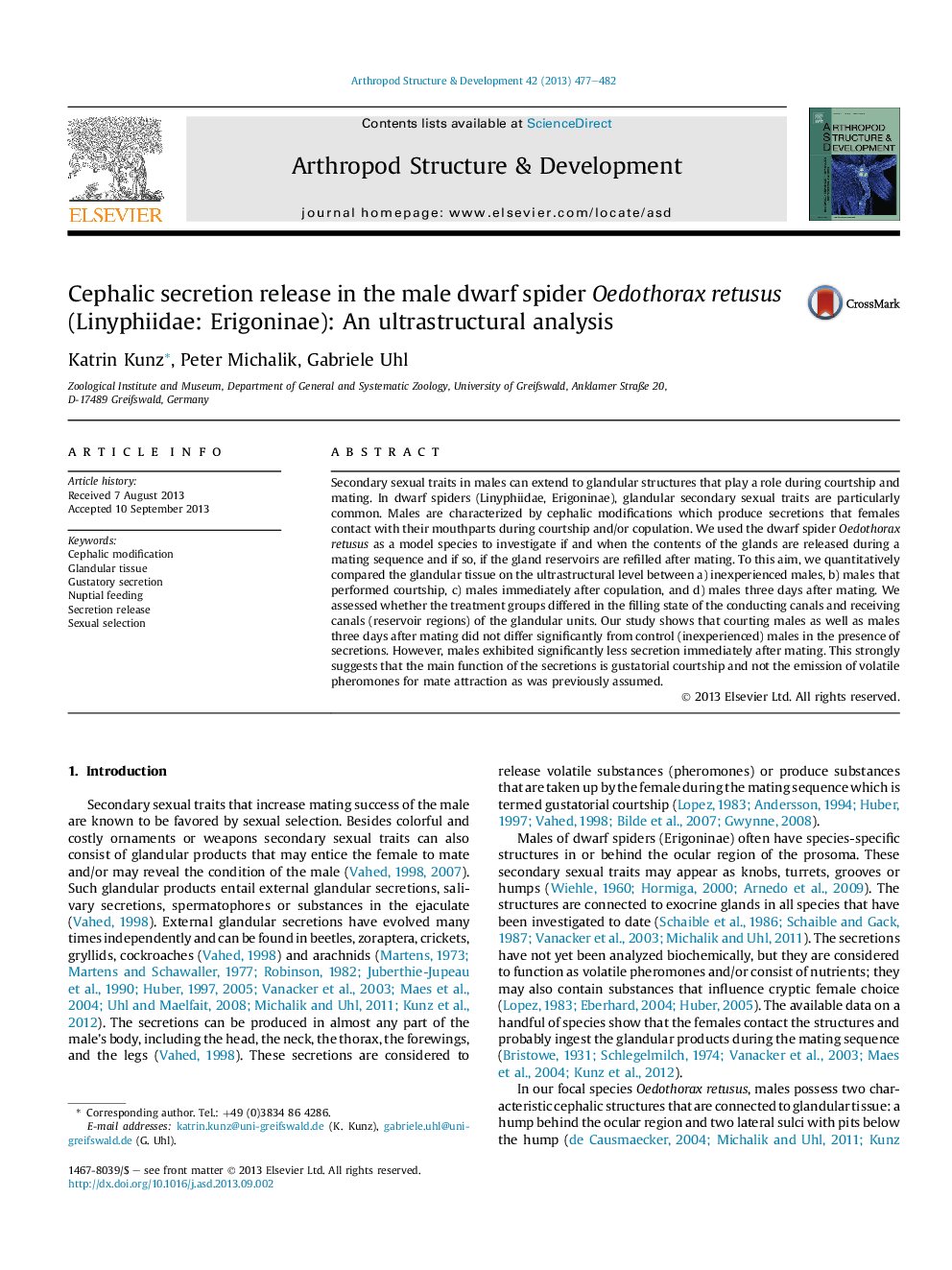| Article ID | Journal | Published Year | Pages | File Type |
|---|---|---|---|---|
| 2778548 | Arthropod Structure & Development | 2013 | 6 Pages |
•Ultrastructural analysis of cephalic secretion release in a male dwarf spider.•First quantitative data on timing of release of glandular products.•Glands exhibit significantly less secretion immediately after mating.•Glandular reservoirs are refilled after mating.•Results suggest that the secretion has a gustatorial function.
Secondary sexual traits in males can extend to glandular structures that play a role during courtship and mating. In dwarf spiders (Linyphiidae, Erigoninae), glandular secondary sexual traits are particularly common. Males are characterized by cephalic modifications which produce secretions that females contact with their mouthparts during courtship and/or copulation. We used the dwarf spider Oedothorax retusus as a model species to investigate if and when the contents of the glands are released during a mating sequence and if so, if the gland reservoirs are refilled after mating. To this aim, we quantitatively compared the glandular tissue on the ultrastructural level between a) inexperienced males, b) males that performed courtship, c) males immediately after copulation, and d) males three days after mating. We assessed whether the treatment groups differed in the filling state of the conducting canals and receiving canals (reservoir regions) of the glandular units. Our study shows that courting males as well as males three days after mating did not differ significantly from control (inexperienced) males in the presence of secretions. However, males exhibited significantly less secretion immediately after mating. This strongly suggests that the main function of the secretions is gustatorial courtship and not the emission of volatile pheromones for mate attraction as was previously assumed.
